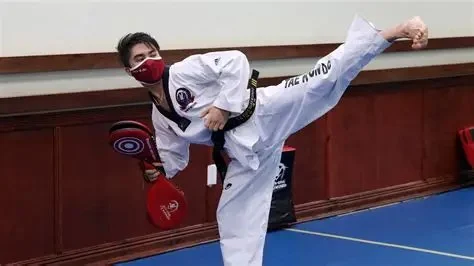
- 1- Introduction
- 2- Understanding Biometric Tracking Technology
- 3- How Biometric Tracking Will Impact Tae Kwon Do
- 4- Benefits of Biometric Tracking for Tae Kwon Do Practitioners
- 5- Real-World Applications and Case Studies
- 6- The Future of Biometric Tracking in Martial Arts
- 7- Conclusion
1- Introduction
As technology continues to evolve, many sports are embracing advanced tools to enhance performance, and Tae Kwon Do is no exception. One of the most exciting innovations in martial arts training is the use of biometric tracking technology. By utilizing wearable devices that track various body metrics, practitioners can gain deep insights into their physical performance and make data-driven decisions to improve their training outcomes. In this article, we will explore how biometric tracking is shaping the future of Tae Kwon Do training and its potential impact on practitioners at all levels.

Champions Martial Arts Plainview / champions martial arts plainview
PlainviewNassau CountyNew York
10 Washington Ave, Plainview, NY 11803, USA
2- Understanding Biometric Tracking Technology
Biometric tracking involves the use of wearable devices that monitor physiological data, such as heart rate, body temperature, movement patterns, and muscle activity. In sports like Tae Kwon Do, these devices can provide valuable insights into the body’s performance during training or competition. Wearable technologies like smartwatches, fitness trackers, and motion sensors are designed to capture real-time data, allowing athletes to optimize their physical output and prevent injuries.
Unlike traditional performance analysis, which often relies on external observation or manual tracking, biometric technology offers a more precise and objective approach to measuring key metrics. This allows both practitioners and coaches to understand their physical limits, track improvements, and focus on specific areas for development.
3- How Biometric Tracking Will Impact Tae Kwon Do
In Tae Kwon Do, precise and controlled movements are essential for success. The integration of biometric tracking in training can significantly enhance how martial artists monitor their performance. Here’s how this technology will likely impact Tae Kwon Do:
- Improved Performance Analysis: Coaches and athletes can track heart rate variability, movement efficiency, and reaction time. This helps identify areas where a practitioner may be losing energy or lacking control during techniques.
- Personalized Training: Biometric tracking enables personalized feedback. Based on real-time data, training plans can be adapted to target areas that need improvement, whether that’s strength, flexibility, or endurance.
- Injury Prevention: Overuse injuries are common in high-intensity sports like Tae Kwon Do. By monitoring muscle fatigue and joint stress, biometric devices can alert athletes when they need rest, thus preventing potential injuries.
4- Benefits of Biometric Tracking for Tae Kwon Do Practitioners
For both amateur and professional martial artists, incorporating biometric data into training routines offers several advantages:
- Enhanced Technique: By measuring muscle activation and movement efficiency, biometric tracking allows athletes to refine their techniques for greater precision and power. Practitioners can see how their body is reacting to different techniques, making it easier to fine-tune their approach.
- Optimized Conditioning: Tae Kwon Do requires a combination of strength, agility, and cardiovascular fitness. Biometric data helps track physical conditioning, enabling athletes to adjust their training to improve endurance, strength, and flexibility based on real-time insights.
- Motivation and Accountability: Seeing progress through data can be a powerful motivator. When practitioners see measurable improvements in their performance metrics, it boosts morale and keeps them engaged in their training goals.
5- Real-World Applications and Case Studies
Biometric tracking has already been embraced in various sports, and its implementation in martial arts is gaining traction. For example, high-level Taekwondo practitioners and coaches have begun using motion sensors and wearable devices to measure the force, speed, and technique accuracy of kicks and punches. By correlating this data with outcomes in training or tournaments, athletes can pinpoint inefficiencies and adjust their strategies accordingly.
A notable case study involves a competitive Taekwondo athlete who used wearable devices to monitor their heart rate and muscle recovery during training. By tracking these data points, the athlete was able to optimize rest periods, improve endurance, and ultimately enhance their performance in competitions. This data-driven approach allowed the athlete to identify patterns that were not previously visible through traditional training methods.
6- The Future of Biometric Tracking in Martial Arts
As wearable technology becomes more advanced and accessible, the role of biometric tracking in martial arts is expected to expand. In the future, it’s likely that biometric sensors will become even more precise, providing insights into neural performance, stress levels, and even cognitive reaction time. Such data could revolutionize not only training but also injury rehabilitation and mental preparation.
Moreover, artificial intelligence (AI) could play a role in interpreting the data collected by biometric devices, providing personalized coaching suggestions based on an athlete’s unique performance profile. The future of biometric tracking in martial arts holds vast potential for improving athletic performance, reducing injury, and enhancing the overall training experience.
7- Conclusion
The integration of biometric tracking technology into Tae Kwon Do training is opening new doors for athletes and coaches alike. By offering precise and personalized insights into an athlete's physical performance, this technology empowers practitioners to fine-tune their techniques, prevent injuries, and reach new levels of success. Whether you’re an aspiring martial artist or a seasoned competitor, embracing biometric tracking is a powerful step toward improving your training and achieving your full potential. For more resources and tools to enhance your Tae Kwon Do journey, visit Jeuns TKD Hub.





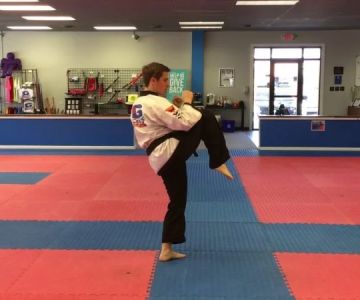
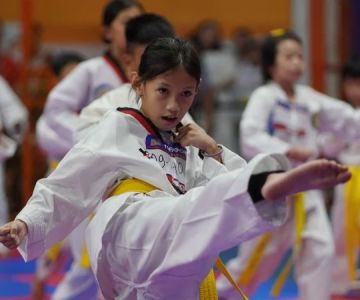

 Axtion Club4.0 (74 reviews)
Axtion Club4.0 (74 reviews) Montella's Karate Academy5.0 (21 reviews)
Montella's Karate Academy5.0 (21 reviews) Master Moreland Tae Kwondo4.0 (17 reviews)
Master Moreland Tae Kwondo4.0 (17 reviews) Freestyle Martial Arts Academy5.0 (52 reviews)
Freestyle Martial Arts Academy5.0 (52 reviews) Kimling's Academy of Martial Arts4.0 (73 reviews)
Kimling's Academy of Martial Arts4.0 (73 reviews) US OLYMPIC TAE KWON DO INSTITUTE5.0 (19 reviews)
US OLYMPIC TAE KWON DO INSTITUTE5.0 (19 reviews)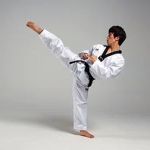 How to Execute a Jumping Roundhouse Kick to the Head
How to Execute a Jumping Roundhouse Kick to the Head How to Execute a Double Kick Combination in Sparring
How to Execute a Double Kick Combination in Sparring How to Perform a Flawless Axe Kick: A Step-by-Step Guide
How to Perform a Flawless Axe Kick: A Step-by-Step Guide DIY Tae Kwon Do Training Equipment for Home Practice
DIY Tae Kwon Do Training Equipment for Home Practice How to Increase Your Vertical Jump for Tae Kwon Do Flying Kicks
How to Increase Your Vertical Jump for Tae Kwon Do Flying Kicks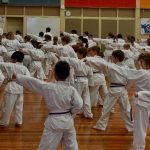 The History of the Tae Kwon Do Peace Corps
The History of the Tae Kwon Do Peace Corps